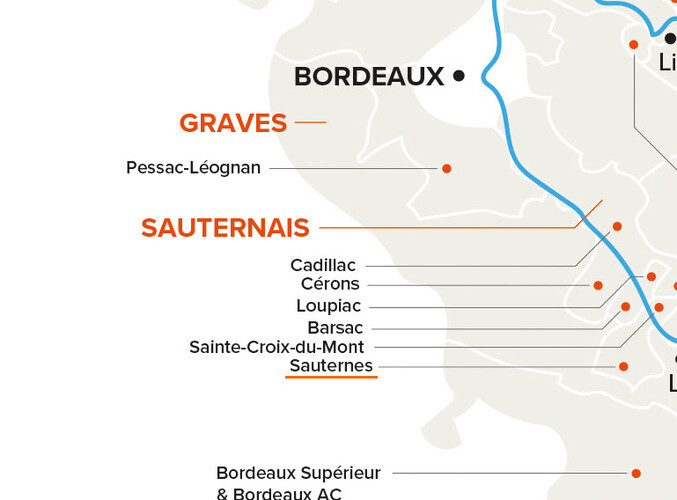The Bordeaux region is dominated by the Gironde estuary and its tributaries the Dordogne and the Garonne. Accordingly, these tributaries form the two building blocks that define the region: the Left Bank and the Right Bank, which, given the crucial role terroir plays in wine production here, are then subdivided into smaller appellations. These appellations are numerous enough, however, here is a brief introduction to those most famous for producing some of the world’s most admired wines.
Bordeaux Wine Regions
St Estèphe
The most northerly of the six classic Médoc communes, St Estèphe is also the coolest of all terroirs in the Médoc, producing wines often more classically structured than its southerly counterparts; wines distinguished by a certain earthiness, robust yet refined. As such, they are tremendously age-worthy, developing wonderful complexities over many years.
St Estèphe is the Médoc’s largest appellation and within it the highest concentration of cru bourgeois classified châteaux. It boasts two of the most famous second growth estates, Château Montrose and Château Cos d’Estournel. Other celebrated St Estèphe producers include Calon-Ségur, Ormes de Pez, Meyney and Capbern.
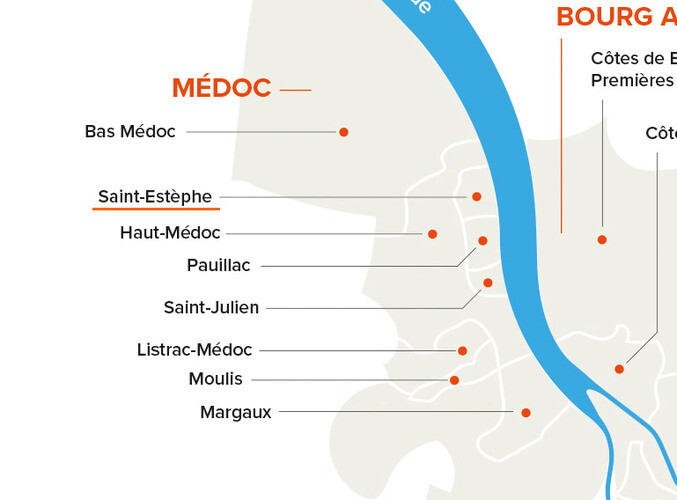
Pauillac
With a total of 18 cru classés, only one other commune enjoys such a concentration of 1855 growths as Pauillac. And of the Médoc’s five 1er cru classé estates, Pauillac is home to three: Châteaux Latour, Lafite and Mouton-Rothschild.
Most agree that in Pauillac, cabernet sauvignon is at its most majestic. Nowhere else is this varietal’s classic cassis and sandalwood characteristics best expressed in what are wines of tremendous depth and power. Rich, opulent, full-bodied, the wines of Pauillac are not just sought after for their inherent qualities, but indeed as a necessity for any great collection. Pauillac has always an integral part to play in any en primeur campaign, which is why we made sure we secured allocations from some of its greatest estates: Batailley, Pichon-Baron, Pichon-Lalande, PontetCanet, Lynch Bages, Grand-Puy-Lacoste among others, they promise many decades of sublime drinking pleasure.
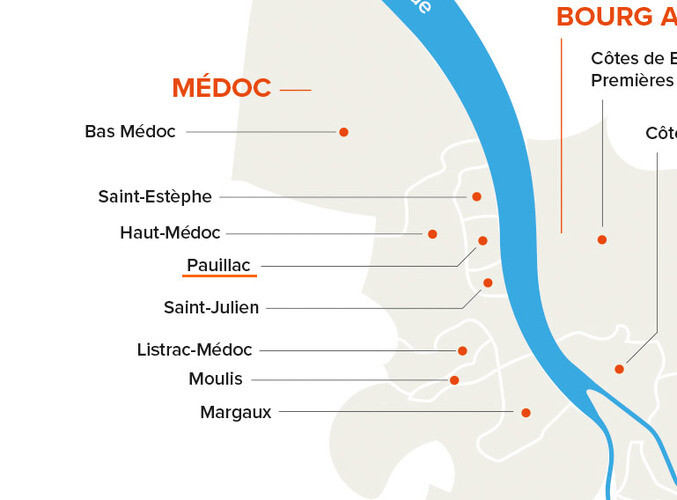
Saint-Julien
The commune with the highest percentage of classed growths – no fewer than eleven, among which are the most prestigious second-growth estates in all the Left Bank – Saint-Julien regularly delivers brilliant quality. Indeed, the trio of Léoville estates (Las Cases, Barton, Poyferré) rank among the wellestablished subcategory of ‘super seconds’, producing wines vying in quality with those of first-growth-heavy Pauillac.
Considered by many as the most consistent of the Médoc appellations, St Julien is, above all, loved for the sheer elegance its terroir renders, giving wines of vivid colour, exquisite balance and wonderful finesse. Which is why this great appellation features prominently for us in en primeur 2020. Châteaux Léovilles, Talbot, Ducru-Beaucaillou and Lagrange are just some of the world-class estates to be considered as crucial additions for your cellar this year.
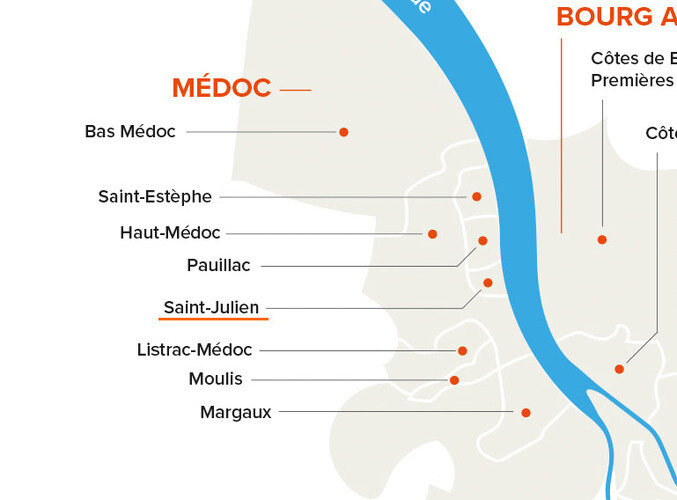
Margaux
A more geographically isolated commune and most southerly of the Médoc, Margaux is also the only one to edge Pauillac in terms of sheer cru classé numbers. Moreover, its 21 span all five growth classifications making Margaux perhaps the most famous of all Bordeaux appellations. With similar breadth is the range of terroir in Margaux, and yet they are all unified by a redolence of gravel deposits and limestone making for a pronounced elegance in the appellations overall style.
Wines that are supple, perfumed and of great purity. And whilst levels of concentration, ripeness and depth can vary depending on terroir and winemaking techniques, there is always an unfailing elegance in these wines.
Châteaux Palmer, d’Issan, Giscours, Angludet and DurfortVivens all count among Margaux’s more celebrated estates, and ones from whom we were sure to secure allocations.
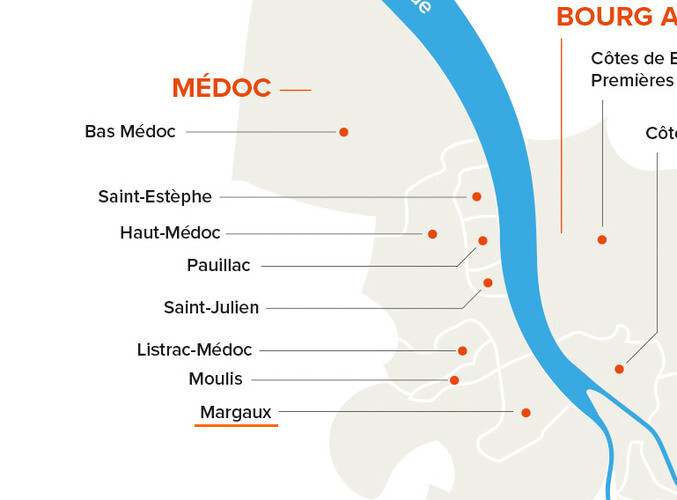
Pessac-Léognan
Radiating from the south-westerly quarter of Bordeaux (city), Pessac-Léognan is a more exclusive appellation within that of much larger ‘Graves’. The essence of ‘Graves’ is quite literally, gravel. The vines of Pessac-Léognan grow on deep layers soil rich in pebbles, quartz and rocks, rendering wines which exude the bright minerality you might expect from such terroir. This is also a terroir to which local producers owe their unique practice of vinifying white wines along with their reds.
Some of its greatest producers, Domaine de Chevalier and Château Malartic-Lagravière are in some ways as revered for the quality of their sauvignonblanc/sémillon blends as they are for their reds, so we made a note of securing an allocation of the latter to include in our en primeur offer. In wonderful contrast to the red wines redolent of smoke, dark cherry, tobacco leaf and cassis, the white wines of Pessac offer florals, citrus, spice, honey... and a refreshing addition to any Bordeaux enthusiast’s cellar
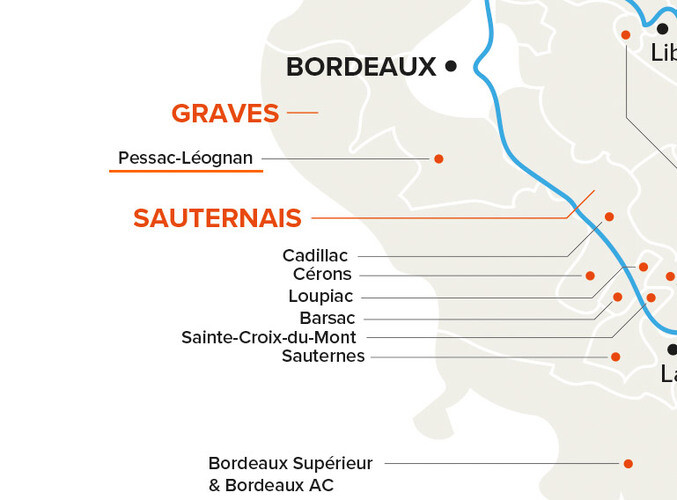
Pomerol
Then, there is Pomerol. Though a much smaller neighbour to St Emilion in terms of production, the more coveted, high-end wines of Pomerol are certainly equal in terms of global stature and prestige. Perhaps even more so. From this relatively rural commune set mostly upon a mixture of gravel, sand and clay, the most sensuous expressions of merlot and cabernet franc opulence issue. Which is particularly remarkable in that Pomerol, quite unlike St Emilion, upholds no classification system for its estates.
But no matter L’Eglise Clinet, L’Évangile and Vieux Château Certan all maintain the wherewithal to produce some of the most sublime cuvées in all the Right Bank - or indeed anywhere.
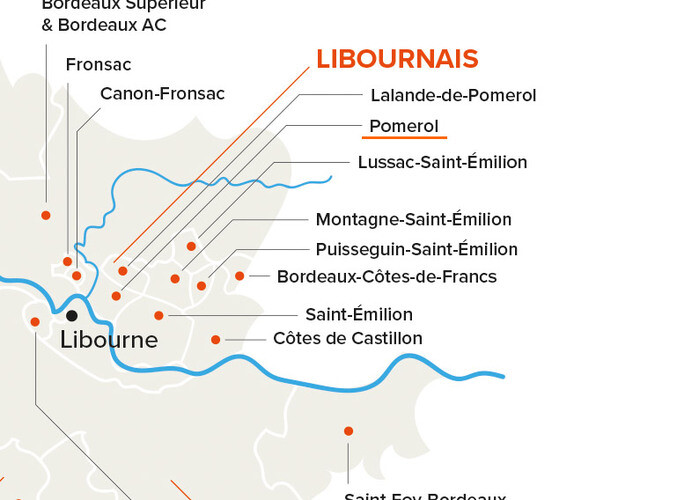
Saint-Émilion
Moving to the Saint-Émilion commune on Bordeaux’s Right Bank, varietal emphasis shifts resolutely to merlot and cabernet franc. Here, softer, plusher, smokier, darker-fruited reds contrast markedly with the more firmly structured cabernet sauvignon-dominant blends of the Médoc, and yet also ones aging with much grace and finesse.
Although the appellation has grown considerably over the last several decades, quality in Saint-Émilion remains paramount as exemplified by the Grand Cru and Premier Grand Cru Classé châteaux re-evaluations it undergoes every ten years. Producers such as Château Figeac, Troplong Mondot and Canon are just a few of the estates that manifest this ethos – those wines are routinely snapped up every en primeur season.
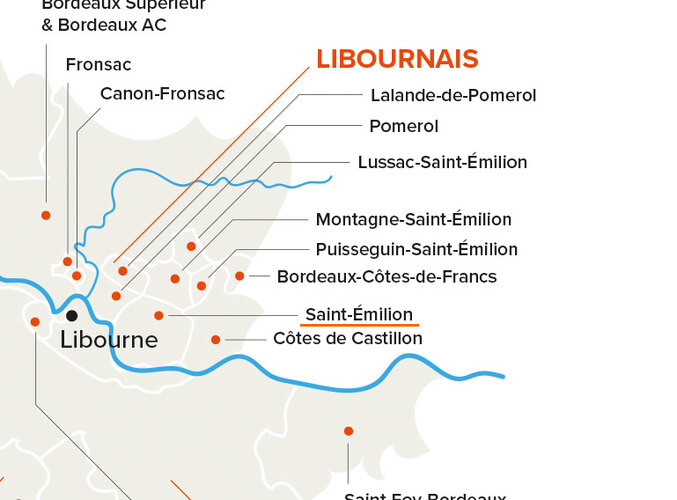
Sauternes
Still within the Graves surrounds and further south of Pessac are the communes of Sauternes and Barsac whose names are synonymous with the world’s greatest dessert wines. For the region their tradition is unique, producing wines exclusively of sauvignon blanc, sémillon and muscadelle and more crucially, through harnessing the botrytis (noble rot) naturally occurring in the vineyards. Amidst the low-lying hills of the region are the warm and humid conditions in which the fungus flourishes on vine, where a grape is transformed into a sticky, sugar-rich pulp. It is this natural transformation that is the basis of what is then an intensive wine making process, one in which all further complexities are realised. To sample the aroma of a mature glass is to realise that there are no wines in the world quite like those of Sauternes. No en primeur offer would be complete without the great wines of Châteaux Doisy-Daene, Suduiraut and Coutet, amongst the best the region has to offer.
